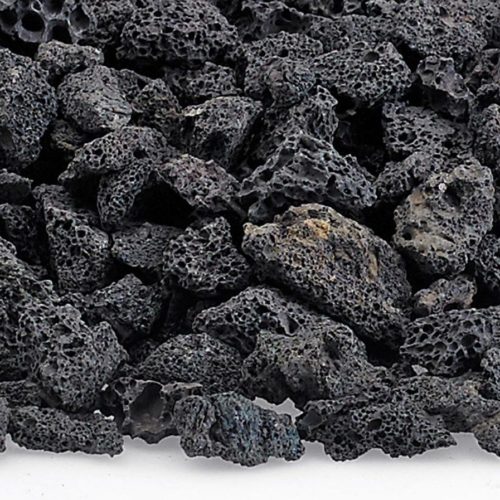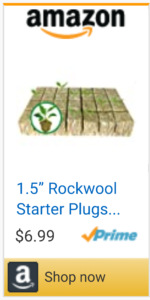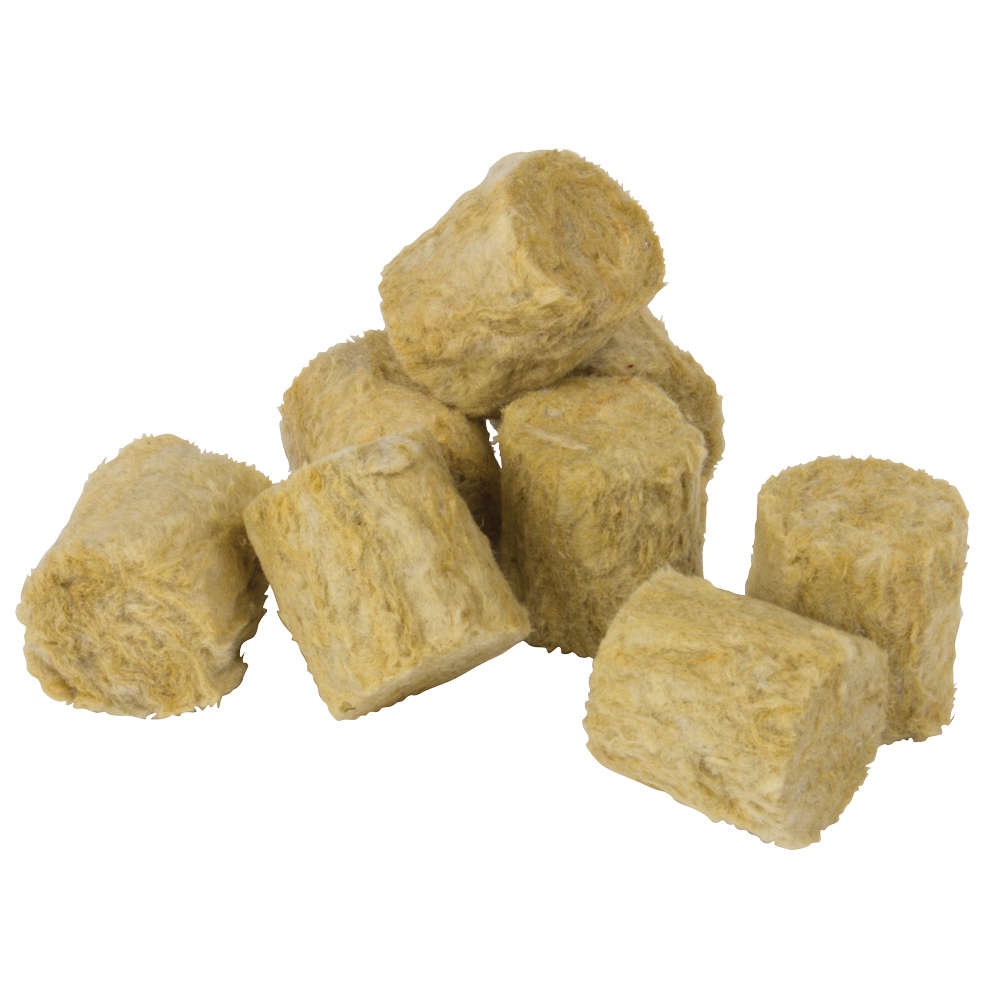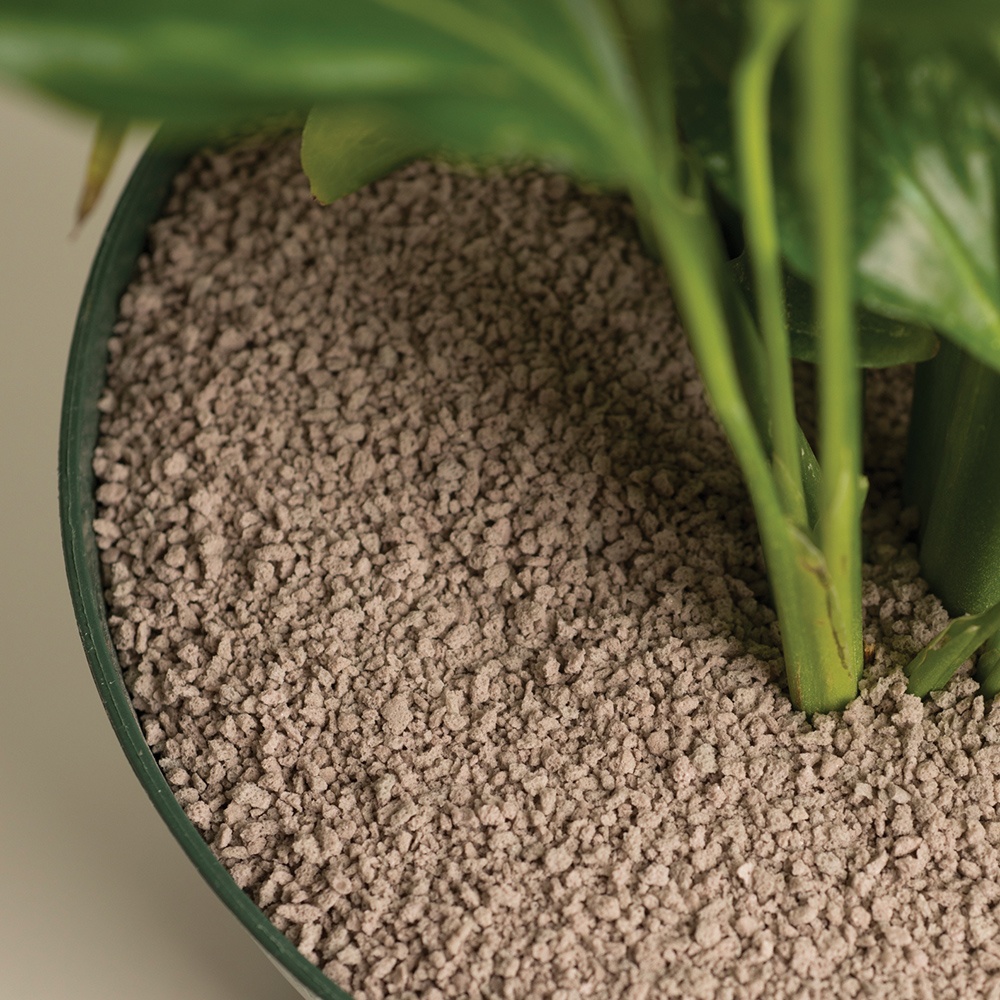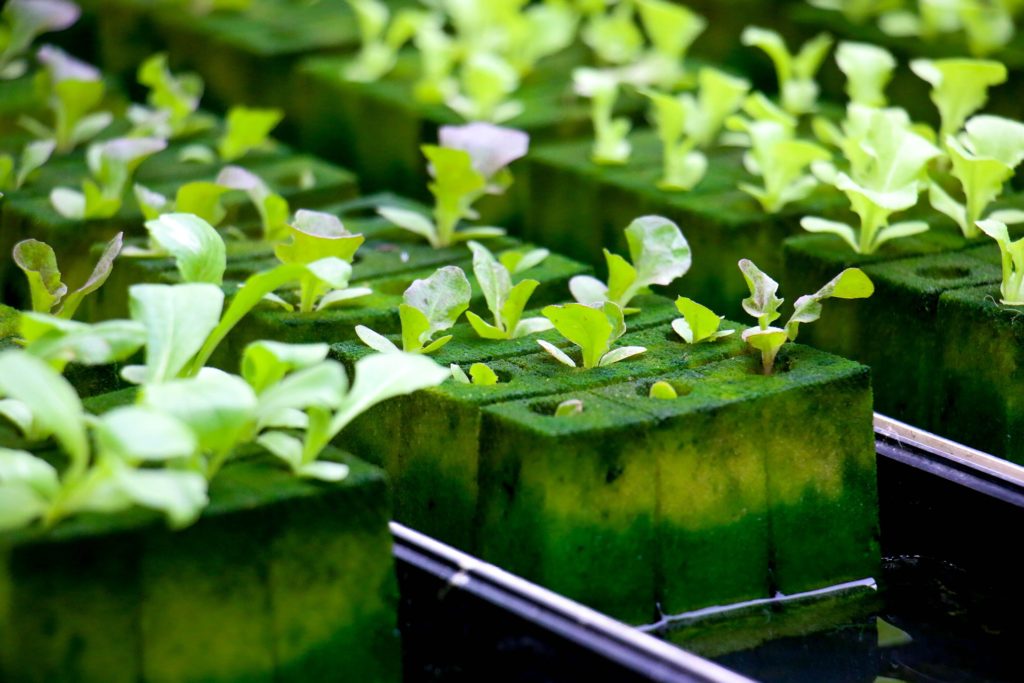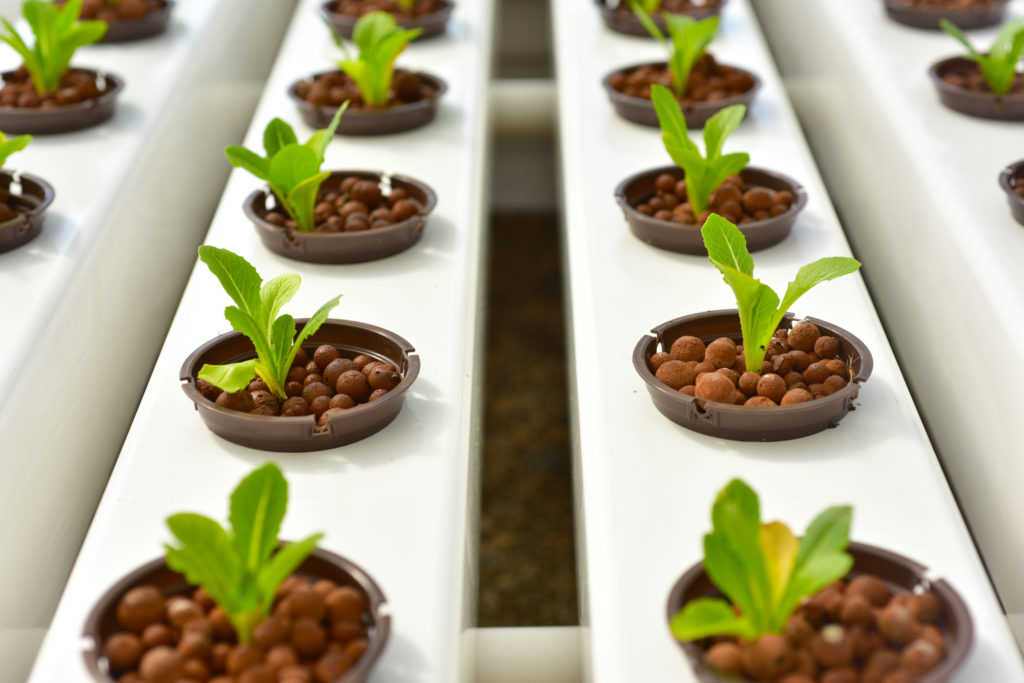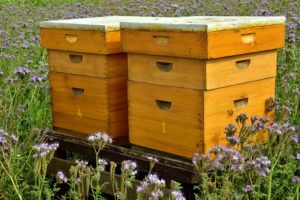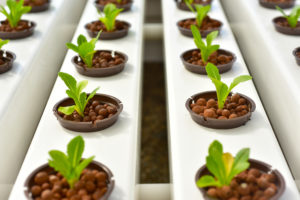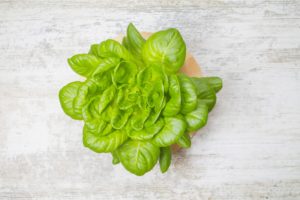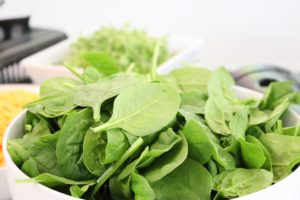Hydroponic grow medium comes in a variety of forms. Rockwool, coco coir, and clay aggregate (lightweight expanded clay pebbles) are some of the most popular and commonly used growing medium. However, other grow media like perlite, vermiculite, rocks, lava rocks, oasis cubes, and parboiled rice husks are also used.
Each growing medium comes with its own set of advantages and disadvantages. And while there’s no perfect, one size fits all grow medium, you can choose the right medium if you know what to look for.
Keep in mind that your choice should also be based on the type of hydroponic system you have. Read about different hydroponic systems here.
Here’s a quick rundown about the different types of grow media for hydroponics:
Coco coir
Coco coir, or coconut fiber, is one of the most popular types of growing media. It’s also incredibly ecofriendly, since it’s made from coconut husks that would otherwise be discarded. Coco coir comes in two forms: chips and fiber. The chips resemble wood chips, while the fiber is stringy, thread-like fibers. No matter what form you choose, coco coir is antifungal, pH neutral, and slow to break down. It also allows plenty of aeration and retains nutrient solution very well.
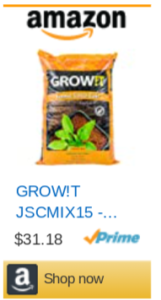 However, it also retains moisture so well that it’s not ideal for every hydroponic system. For instance, coco coir may hold too much moisture to be used on its own in an ebb and flow system. It’s common for hydroponic growers to mix coco coir with another grow medium, such as clay pebbles. Coconut fiber is ideal for drip and wick hydroponic systems, because moisture retention is key for those setups.
However, it also retains moisture so well that it’s not ideal for every hydroponic system. For instance, coco coir may hold too much moisture to be used on its own in an ebb and flow system. It’s common for hydroponic growers to mix coco coir with another grow medium, such as clay pebbles. Coconut fiber is ideal for drip and wick hydroponic systems, because moisture retention is key for those setups.
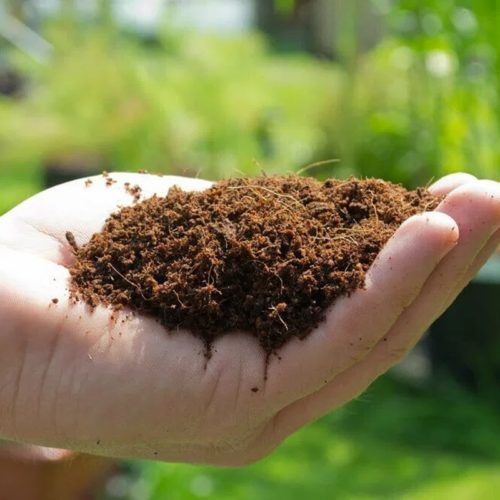
Clay pebbles
A popular hydroponic growing medium, clay pebbles are technically called Lightweight Expanded Clay Aggregate (or, LECA). To put it simply, Clay pebbles are basically little balls of clay processed at incredibly high temperatures. Because of this, they’re very porous, and reusable, since they don’t degrade over time. The specific, spherical shape of the pebbles allows roots to have balanced oxygen levels. Expanded clay aggregate is lightweight, although heavy enough to keep plants supported and in place.
You may also see lightweight expanded clay aggregate pebbles referred to as Hydroton, although that’s actually a brand name. A benefit of clay pebbles is that they’re pH neutral and won’t release other minerals that create a nutrient imbalance. If you choose to use clay pebbles, you do need to rinse them well before putting them in your system. This medium is ideal for systems that don’t need to hold water long. Expanded clay pebbles drain quickly. That’s why when they’re used in hydroponic ebb and flow systems, the flood cycles have to be more frequent.
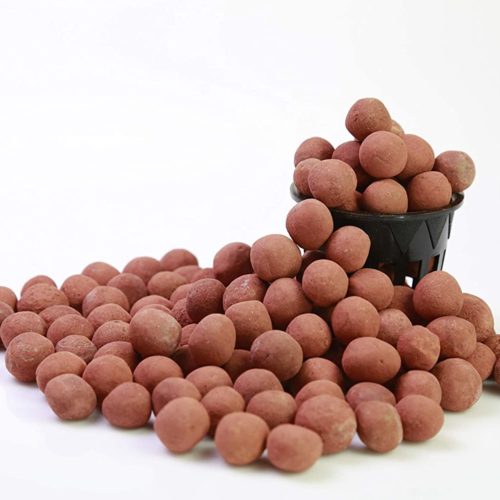
Rockwool
Rockwool is a popular hydroponic growing medium, especially for starting seeds. It’s created by heating rocks, typically limestone or granite, to extremely high temperatures. The heated rock is hot enough to melt, and then it’s ‘spun’ into long, thin fibers. Rockwool retains moisture very well due to its porous nature. It’s also sterile, which is ideal for hydroponic systems.
However, rockwool does need to be rinsed and soaked before use. The dust can create issues if inhaled, and the pH is high. So, don’t breathe in the dust, and soak it long enough to neutralize some of the pH. It can be tempting to squeeze out the rockwool after you soak it. But, fight the temptation. Rockwool is manufactured to have the optimal structure for airflow and water retention, and squeezing it disrupts that. If you keep it clean and take care of it, rockwool lasts pretty much forever since it doesn’t degrade.
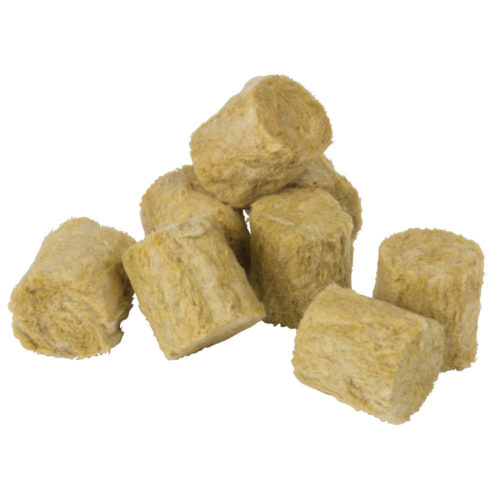
Perlite and Vermiculite
Perlite and vermiculite are separate types of grow media. That said, you’ll often see them mixed together, or with another growing medium. Both perlite and vermiculite are created by heating and processing minerals at extreme temperatures. Both perlite and vermiculite hold moisture and oxygen very well, although they can hold too much moisture for some root systems. Of the two, vermiculite holds nutrients better, but perlite is used more often.
Ideally, both should be rinsed before use. Be careful when rinsing perlite, because the dust isn’t good to inhale. Vermiculite and perlite are so lightweight, that they can clog hydroponic systems when used on their own. To prevent this, and give plants a balanced base, make sure you mix them with another grow medium, like clay pebbles or coconut fiber. Too much water retention can harm root systems, so unless you have a drip or wick type hydroponic system, mix it with something that drains faster.
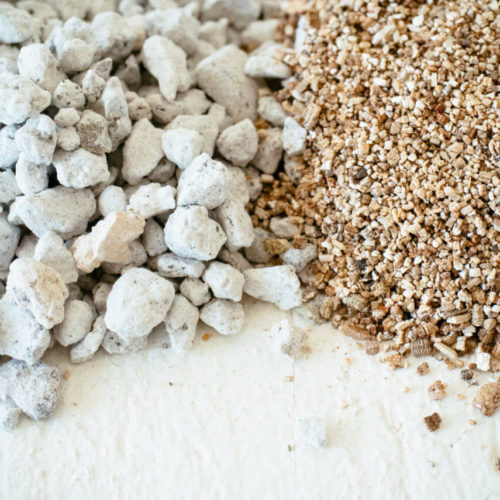
Oasis cubes
Oasis cubes are kind of like the next evolution of rockwool. This is the growing medium most people will switch to if they’ve been using rockwool. Much like rockwool, it gives a good balance of oxygen and nutrients. Although oasis cubes do drain somewhat better. Oasis cubes are ideal for starting plants, whether they’re seeds or cuttings. Plus, it’s much easier to transplant young sprouts in an Oasis cube.
Oasis cubes have an open cell structure which provides a balanced environment for growing root systems. They look a lot like the green floral foam you find in hobby stores. Another nice thing about oasis cubes is that they don’t need to be soaked before you use them.
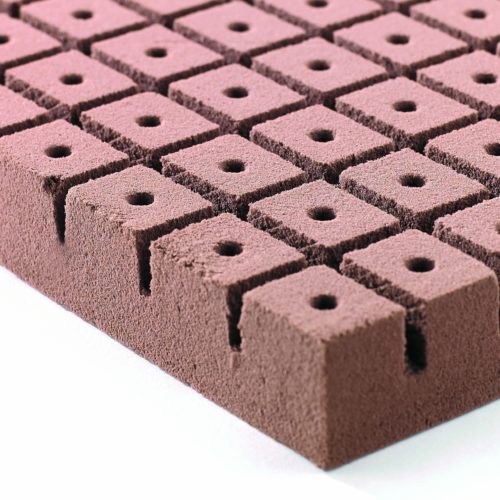
Rocks and Gravel
Rocks and gravel can be quite heavy. As a result, they’re not ideal for every system. However, when you have a large hydroponic system, and need a lot of grow medium, they do the trick. This cuts down on costs for large scale hydroponic growers, especially with an ebb and flow system in place.
A couple of things to consider, however: wash rocks and gravel thoroughly before use. Try to get any dust and dirt off and choose rocks that won’t release many extra minerals into your solution. Rocks also naturally retain heat (think of rocks under a hot sun all day). In turn, that will raise the temperature of your nutrient solution. It may not be a significant difference, but it’s worth keeping an eye on.
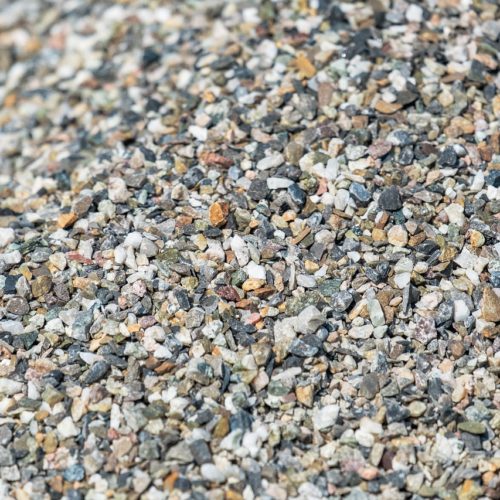
Lava Rocks
Lava rocks are a fairly popular hydroponic growing medium, mainly because of the aeration and ideal drainage they provide. Most lava rocks are also pH neutral, which means they won’t affect the overall pH of your nutrient solution. They do provide plenty of trace minerals too. However, this can be an advantage or disadvantage. If you’re not sure what’s getting released, or how much of it, it can affect the nutrient content of your hydroponic solution. Typically lava rocks can contain copper, calcium, magnesium, aluminum, zinc, cadmium, and manganese. These rocks typically have sharp edges. That means if you use them, you need to be careful that they don’t cut and damage your plants’ root systems.
